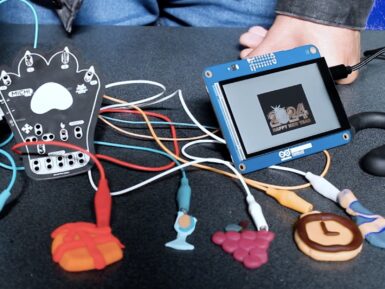
Arduino MKR ETH Shield
You may want to connect an Arduino MKR board with an Ethernet cable instead of using WiFi. An Ethernet connection can sometimes be stabler, faster, and more secure. To do this, plug in the Arduino MKR ETH shield.
Overview
Are you developing a project for an environment where wireless connections are unavailable or would be inefficient? The MKR ETH shield allows to have a wired Ethernet connection between your MKR board and your network or the Internet. This is particularly useful for devices located where either electromagnetic noise is a problem or there are special safety requirements.
Tech specs
| Connectivity | Ethernet |
| Connector | RJ45 Female |
| SPI SD Card Slot | Yes |
| Circuit Operating Voltage | 3.3 V |
| Compatibility | MKR boards |
Conformities
Resources for Safety and Products
Manufacturer Information
The production information includes the address and related details of the product manufacturer.
Arduino S.r.l.
Via Andrea Appiani, 25
Monza, MB, IT, 20900
https://www.arduino.cc/
Responsible Person in the EU
An EU-based economic operator who ensures the product's compliance with the required regulations.
Arduino S.r.l.
Via Andrea Appiani, 25
Monza, MB, IT, 20900
Phone: +39 0113157477
Email: support@arduino.cc
Documentation
OSH: Schematics
The Arduino MKR ETH Shield is open-source hardware! You can build your own board using the following files:
EAGLE FILES IN .ZIP SCHEMATICS IN .PDFLearn more
Get Inspired

Display real-time meeting room availability, synchronized with Google Calendar through Arduino IoT Cloud.

Watching back a slideshow of some of your favorite times of the past years is a great way to reflect on what’s happened and get excited for the future. The Electronic Cats crew wanted to incorporate this concept into a more simplified, interactive form which resulted in the Garrita project. Garrita is a homemade platform that lets an Arduino GIGA R1 WiFi with GIGA Display Shield transform into a highly mobile slideshow thanks to its larger onboard memory capacity and convenient layout. This year, the Electronic Cats were able to take their image shifter concept even further with Michi: an existing project that turns any conductive object into a capacitive touch-sensing controller. Whenever one of Michi’s inputs are toggled, the board sends a signal to the GIGA R1 WiFi that causes the current slide to advance to the next one. In order to go from a locally stored image to something on the Display Shield, users first transform their images into a more suitable format via the LVGL conversion tool. Once downloaded, the resulting files can be easily bundled into a Sketch before they become accessible in the application code. To see more about how the Electronic Cats built Garrita, you can read their write-up here on Hackster.io.








